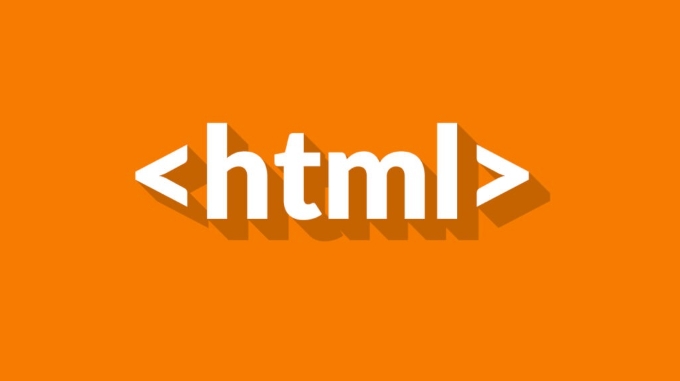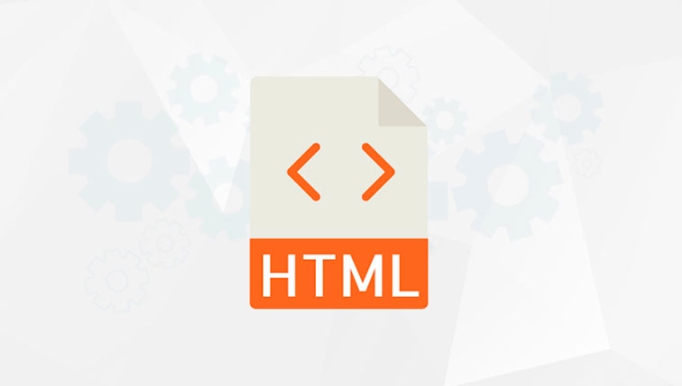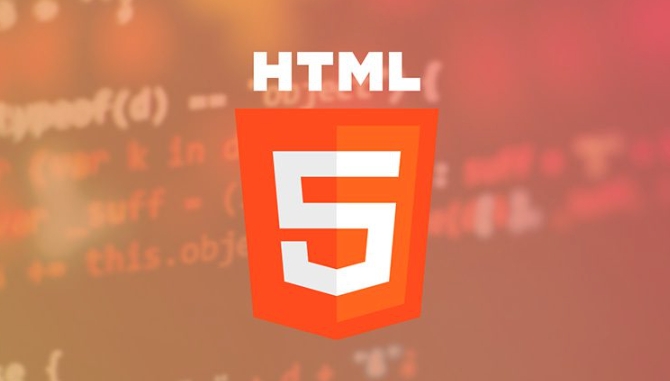Leveraging Custom Data Attributes in HTML5 for Storing Information
Jul 11, 2025 am 02:03 AMThe data-* attribute is a feature in HTML5 used to store custom data, allowing information on elements that does not affect the structure and style of the page. 1. It is defined by data-followed by custom names, such as
; 2. Advantages include strong readability, avoiding naming conflicts, and good compatibility; 3. Data can be obtained or set through JavaScript dataset objects, such as element.dataset.userId; 4. It is often used to store AJAX parameters, control component status, and pass plug-in configuration; 5. When using it, you need to pay attention to not having sensitive information, avoiding a large amount of data, reasonably naming, and keeping updates and synchronous.
Sometimes we need to store some extra information on the HTML element, but we don't want to affect the structure or style of the page. At this time, the custom data attributes (data-*) provided by HTML5 come in handy.

What is the data-* attribute?
data-* is a standard way introduced in HTML5, allowing us to store arbitrary custom data on elements. Its naming format is data- followed by a name you define yourself, such as:

<div data-user-id="123" data-role="admin"></div>
These properties are not rendered into visual content by the browser, nor affect the page layout, but can be easily accessed and operated through JavaScript. Ideal for saving some meta information related to DOM elements.
Why use the data-* attribute?
Compared with common practices in the past, such as writing information in class or id, or storing it through hidden input, data-* is more semantic, standardized, and easier to maintain.

It has several obvious advantages:
- Strong readability : Others can see which custom data are at a glance when looking at your HTML.
- Avoid naming conflicts : data-* The name is controlled by you and will not collide with other attributes.
- Good compatibility : modern browsers support it, and libraries such as jQuery also have built-in convenient APIs to read and write them.
How to use it in practice?
Using data-* in a project is generally used in combination with JavaScript. For example:
Get data
const element = document.querySelector('#myElement'); const userId = element.dataset.userId; // Pay attention to the camel naming
If you write data-user-id in HTML, the corresponding dataset.userId in JavaScript is dataset.userId .
Setting up data
element.dataset.prefetchUrl = '/api/user/123';
This automatically creates data-prefetch-url property on the element.
Common application scenarios include:
- Store parameters required for AJAX request
- Control component status (such as whether the menu is expanded)
- Pass configuration items to front-end plug-in
For example, you have a button that needs to load user data after clicking, you can write it like this:
<button data-user-id="456" class="load-user">Load user</button>
Then listen to the click event in JS, and directly take the value from dataset.userId to request the interface.
What should you pay attention to when using it?
Although data-* is very convenient, it is not used casually. There are a few details to note:
- Don't store sensitive information : because this data is exposed to HTML and anyone can see it.
- Avoid large amounts of data : Although you can store JSON strings in, don't use them as a client database.
- Reasonable naming : The name should be meaningful, try to unify the style as much as possible, and facilitate teamwork.
- Pay attention to update synchronization : If the data changes frequently, remember to update the corresponding data-* value, otherwise you may get old data.
If you need to use multiple words, it is recommended to separate them with hyphen, which will become camel-like access in JS. For example, data-item-index → dataset.itemIndex .
Basically that's it. The data-* attribute is a small and practical function. The rational use can make the front-end code clearer and more organized.
The above is the detailed content of Leveraging Custom Data Attributes in HTML5 for Storing Information. For more information, please follow other related articles on the PHP Chinese website!

Hot AI Tools

Undress AI Tool
Undress images for free

Undresser.AI Undress
AI-powered app for creating realistic nude photos

AI Clothes Remover
Online AI tool for removing clothes from photos.

Clothoff.io
AI clothes remover

Video Face Swap
Swap faces in any video effortlessly with our completely free AI face swap tool!

Hot Article

Hot Tools

Notepad++7.3.1
Easy-to-use and free code editor

SublimeText3 Chinese version
Chinese version, very easy to use

Zend Studio 13.0.1
Powerful PHP integrated development environment

Dreamweaver CS6
Visual web development tools

SublimeText3 Mac version
God-level code editing software (SublimeText3)

Hot Topics
 Is H5 a Shorthand for HTML5? Exploring the Details
Apr 14, 2025 am 12:05 AM
Is H5 a Shorthand for HTML5? Exploring the Details
Apr 14, 2025 am 12:05 AM
H5 is not just the abbreviation of HTML5, it represents a wider modern web development technology ecosystem: 1. H5 includes HTML5, CSS3, JavaScript and related APIs and technologies; 2. It provides a richer, interactive and smooth user experience, and can run seamlessly on multiple devices; 3. Using the H5 technology stack, you can create responsive web pages and complex interactive functions.
 H5 and HTML5: Commonly Used Terms in Web Development
Apr 13, 2025 am 12:01 AM
H5 and HTML5: Commonly Used Terms in Web Development
Apr 13, 2025 am 12:01 AM
H5 and HTML5 refer to the same thing, namely HTML5. HTML5 is the fifth version of HTML, bringing new features such as semantic tags, multimedia support, canvas and graphics, offline storage and local storage, improving the expressiveness and interactivity of web pages.
 Understanding H5 Code: The Fundamentals of HTML5
Apr 17, 2025 am 12:08 AM
Understanding H5 Code: The Fundamentals of HTML5
Apr 17, 2025 am 12:08 AM
HTML5 is a key technology for building modern web pages, providing many new elements and features. 1. HTML5 introduces semantic elements such as, , etc., which enhances web page structure and SEO. 2. Support multimedia elements and embed media without plug-ins. 3. Forms enhance new input types and verification properties, simplifying the verification process. 4. Offer offline and local storage functions to improve web page performance and user experience.
 HTML5: The Building Blocks of the Modern Web (H5)
Apr 21, 2025 am 12:05 AM
HTML5: The Building Blocks of the Modern Web (H5)
Apr 21, 2025 am 12:05 AM
HTML5 is the latest version of the Hypertext Markup Language, standardized by W3C. HTML5 introduces new semantic tags, multimedia support and form enhancements, improving web structure, user experience and SEO effects. HTML5 introduces new semantic tags, such as, ,, etc., to make the web page structure clearer and the SEO effect better. HTML5 supports multimedia elements and no third-party plug-ins are required, improving user experience and loading speed. HTML5 enhances form functions and introduces new input types such as, etc., which improves user experience and form verification efficiency.
 HTML5: The Standard and its Impact on Web Development
Apr 27, 2025 am 12:12 AM
HTML5: The Standard and its Impact on Web Development
Apr 27, 2025 am 12:12 AM
The core features of HTML5 include semantic tags, multimedia support, offline storage and local storage, and form enhancement. 1. Semantic tags such as, etc. to improve code readability and SEO effect. 2. Simplify multimedia embedding with labels. 3. Offline storage and local storage such as ApplicationCache and LocalStorage support network-free operation and data storage. 4. Form enhancement introduces new input types and verification properties to simplify processing and verification.
 HTML5 and H5: Understanding the Common Usage
Apr 22, 2025 am 12:01 AM
HTML5 and H5: Understanding the Common Usage
Apr 22, 2025 am 12:01 AM
There is no difference between HTML5 and H5, which is the abbreviation of HTML5. 1.HTML5 is the fifth version of HTML, which enhances the multimedia and interactive functions of web pages. 2.H5 is often used to refer to HTML5-based mobile web pages or applications, and is suitable for various mobile devices.
 The Connection Between H5 and HTML5: Similarities and Differences
Apr 24, 2025 am 12:01 AM
The Connection Between H5 and HTML5: Similarities and Differences
Apr 24, 2025 am 12:01 AM
H5 and HTML5 are different concepts: HTML5 is a version of HTML, containing new elements and APIs; H5 is a mobile application development framework based on HTML5. HTML5 parses and renders code through the browser, while H5 applications need to run containers and interact with native code through JavaScript.
 Understanding H5: The Meaning and Significance
May 11, 2025 am 12:19 AM
Understanding H5: The Meaning and Significance
May 11, 2025 am 12:19 AM
H5 is HTML5, the fifth version of HTML. HTML5 improves the expressiveness and interactivity of web pages, introduces new features such as semantic tags, multimedia support, offline storage and Canvas drawing, and promotes the development of Web technology.






